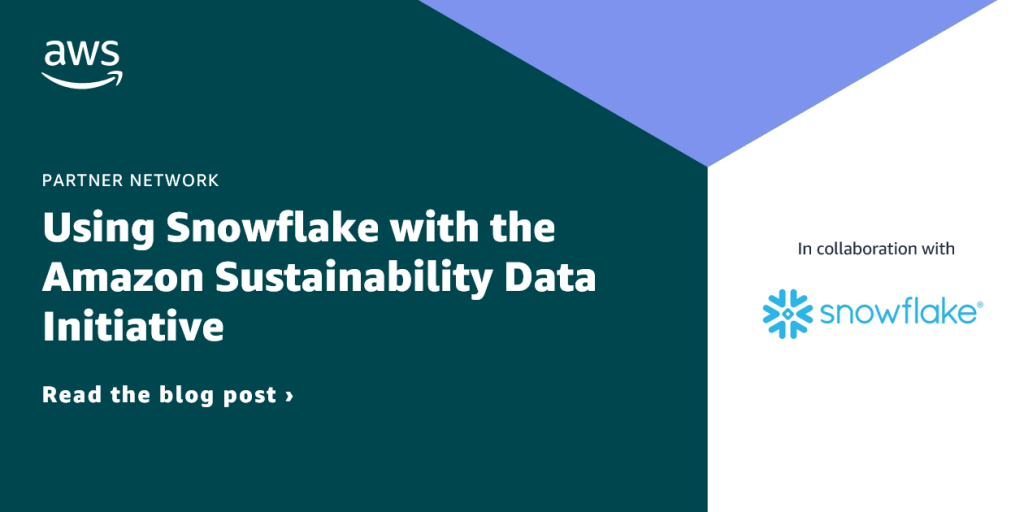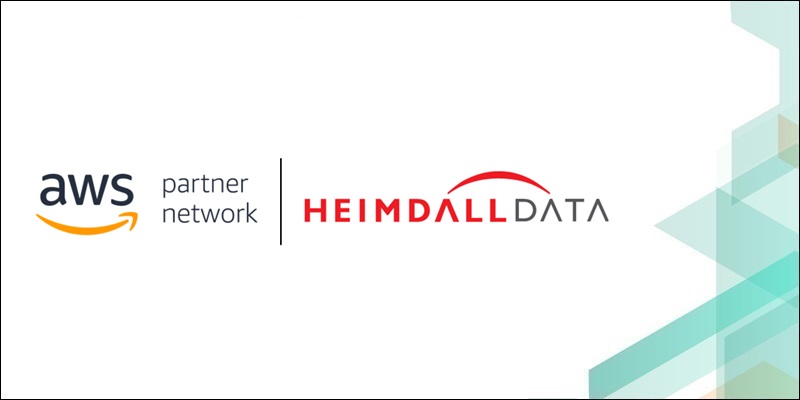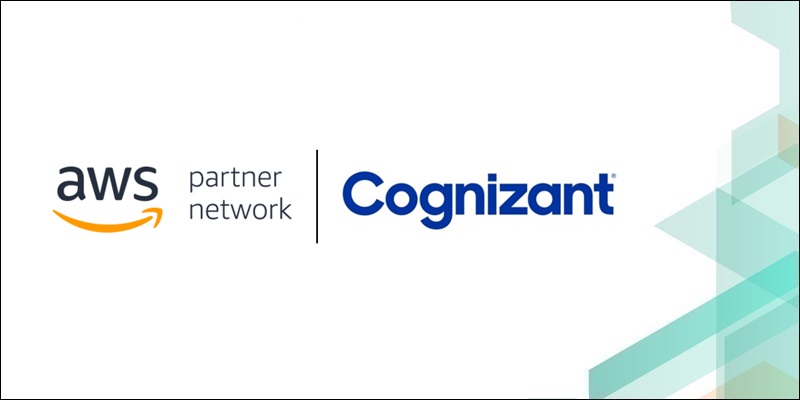AWS Partner Network (APN) Blog
Tag: SQL
Using Snowflake to Access and Combine Multiple Datasets Hosted by the Amazon Sustainability Data Initiative
The zero-cost Amazon Sustainability Data Initiative (ASDI) seeks to accelerate sustainability research and innovation by minimizing the cost and time required to analyze large sustainability datasets. In this post, we’ll use Snowflake, a data cloud company, to work with two different ASDI datasets containing climate and air quality data. We’ll demonstrate how to access ASDI datasets, join them together by date, and ultimately form a merged result.
Using Databricks SQL on Photon to Power Your AWS Lake House
Databricks SQL is a dedicated workspace for data analysts that comprises a native SQL editor, drag-and-drop dashboards, and built-in connectors for all major business intelligence tools as well as Photon. In this post, Volker Tjaden, an APN Ambassador from Databricks, shares the technical capabilities of Databricks SQL and walks through two examples: ingesting, querying, and visualizing AWS CloudTrail log data, and building near real-time dashboards on data coming from Amazon Kinesis.
How Etleap Integrates with Amazon Redshift Data Sharing to Provide Isolation of ETL and BI Workloads
Tens of thousands of customers use Amazon Redshift to process exabytes of data per day and power analytics workloads such as business intelligence, predictive analytics, and real-time streaming analytics. Learn how Etleap integrates with new data sharing and cross-database querying capabilities in Amazon Redshift to enable workload isolation for diverse analytics use cases in customer environments. Etleap integrates with any data source and runs either as a hosted solution (SaaS) or inside your VPC.
Advanced Connection Pooling with the Heimdall Proxy
As databases are often a key component of internet infrastructure, IT departments may be challenged by poor connection management from the application. The Heimdall Proxy helps developers, database administrators, and architects horizontally scale out and optimize connections through connection pooling for Amazon Amazon RDS and Amazon Redshift without any application changes. As a result, you will reduce your database instance size and support higher user counts.
Using Dremio for Fast and Easy Analysis of Amazon S3 Data
Although many SQL engines allow tools to query Amazon S3 data, organizations face multiple challenges, including high latency and infrastructure costs. Learn how Dremio empowers analysts and data scientists to analyze data in S3 directly at interactive speed, without having to physically copy data into other systems or create extracts, cubes, and/or aggregation tables. Dremio’s unique architecture enables faster and more reliable query performance than traditional SQL engines.
How to Build a Real-Time Gaming Leaderboard with Amazon DynamoDB and Rockset
For microservices that predominantly write data, Amazon DynamoDB provides an “always on” experience without the need for careful capacity planning, resharding, and database maintenance. These capabilities make DynamoDB a popular database service for various parts of game platforms like player data, game state, session history, and leaderboards. Learn how to pair Amazon DynamoDB with an analytics solution like Rockset to automatically index your data for fast search, aggregations, and joins at scale.
How Kloia Helped GoDataFeed Modernize Monolithic .NET Applications with AWS Serverless
Many enterprises have .NET Framework legacy applications they need modernize and convert to cloud-native. One of the largest product feed automation and optimization platforms, GoDataFeed has a back-end platform that ingests millions of items of catalog data from multiple sources. Learn how Kloia addressed GoDataFeed’s challenges by transforming their legacy .NET Framework monolithic application into a .NET Core-based decoupled architecture.
Change Data Capture from On-Premises SQL Server to Amazon Redshift Target
Change Data Capture (CDC) is the technique of systematically tracking incremental change in data at the source, and subsequently applying these changes at the target to maintain synchronization. You can implement CDC in diverse scenarios using a variety of tools and technologies. Here, Cognizant uses a hypothetical retailer with a customer loyalty program to demonstrate how CDC can synchronize incremental changes in customer activity with the main body of data already stored about a customer.
Running SQL on Amazon Athena to Analyze Big Data Quickly and Across Regions
Data is the lifeblood of a digital business and a key competitive advantage for many companies holding large amounts of data in multiple cloud regions. Imperva protects web applications and data assets, and in this post we examine how you can use SQL to analyze big data directly, or to pre-process the data for further analysis by machine learning. You’ll also learn about the benefits and limitations of using SQL, and see examples of clustering and data extraction.
Microsoft SQL Standard Clustering Across AWS Availability Zones with Zadara Storage as a Service
With Zadara offering Storage-as-a-Service across Availability Zones, the platform’s centralized storage services release the ability to connect multiple Microsoft (MSSQL) servers in a standard Windows Server Failover Cluster model to a single set of shared storage volumes. This removes the need for MSSQL Enterprise Edition licensing and the doubling up of Amazon EBS disk for Amazon EC2 instances. In this post, explore the use of high availability MSSQL Standard Clustering on AWS with Zadara.









